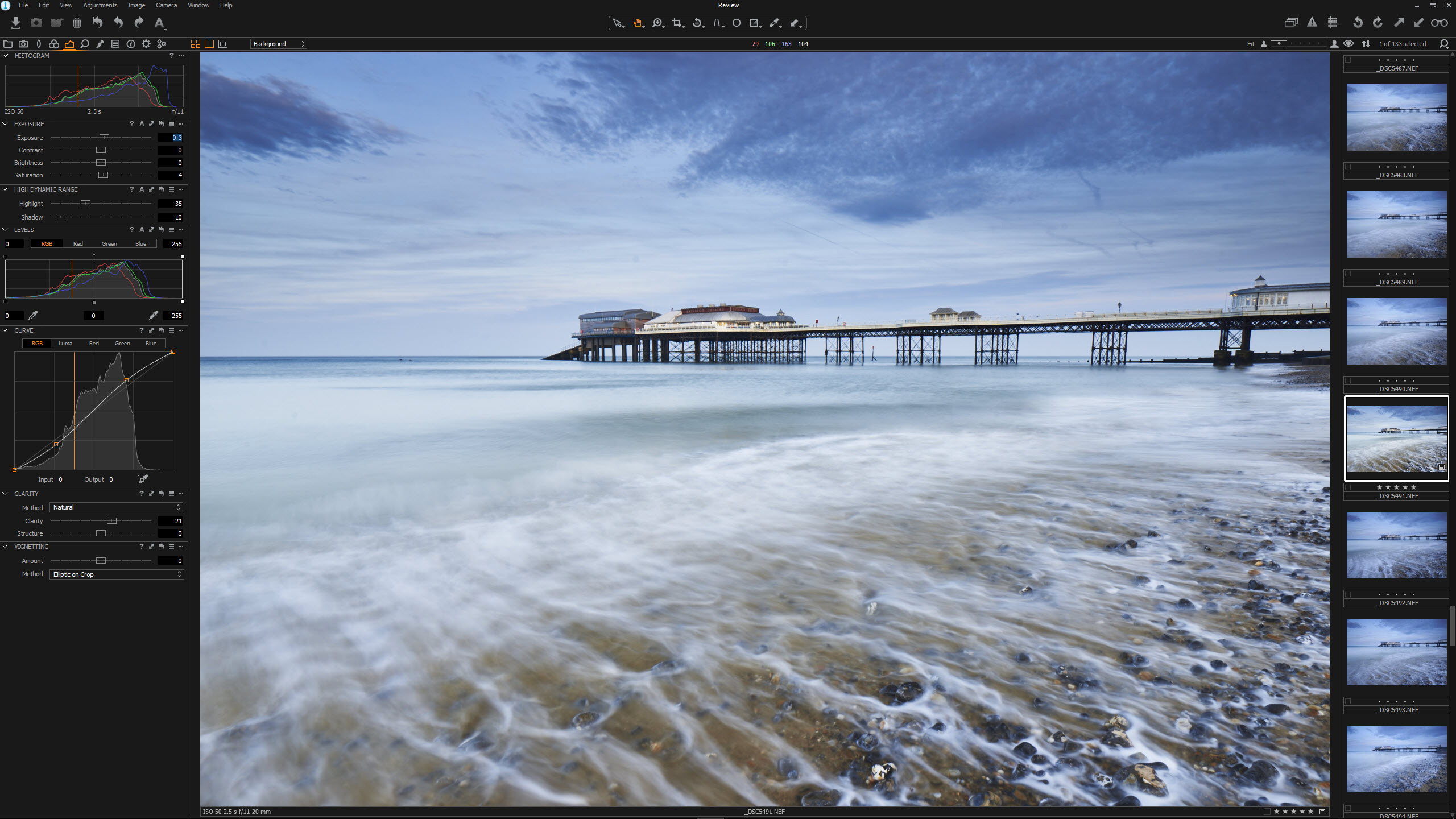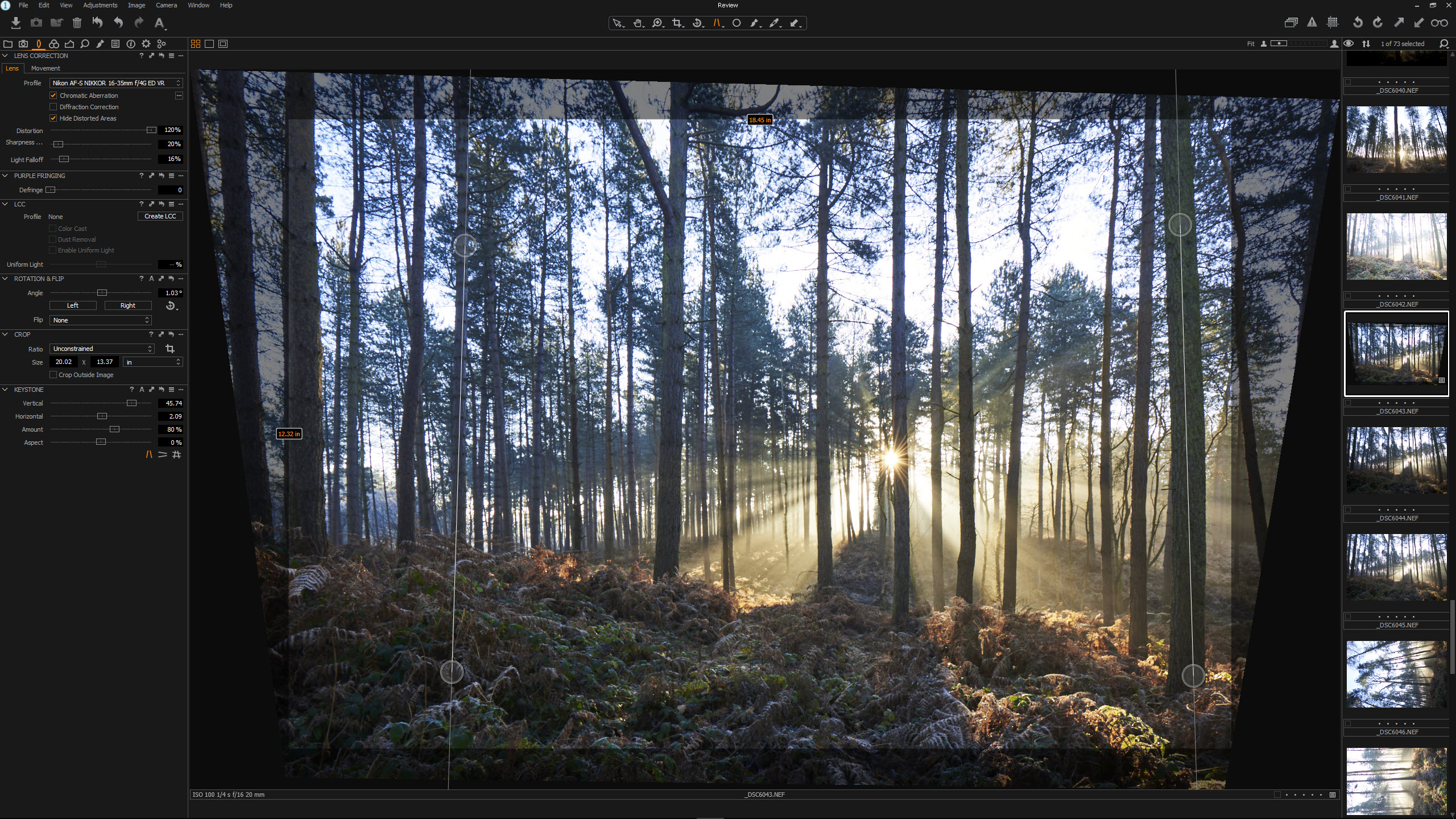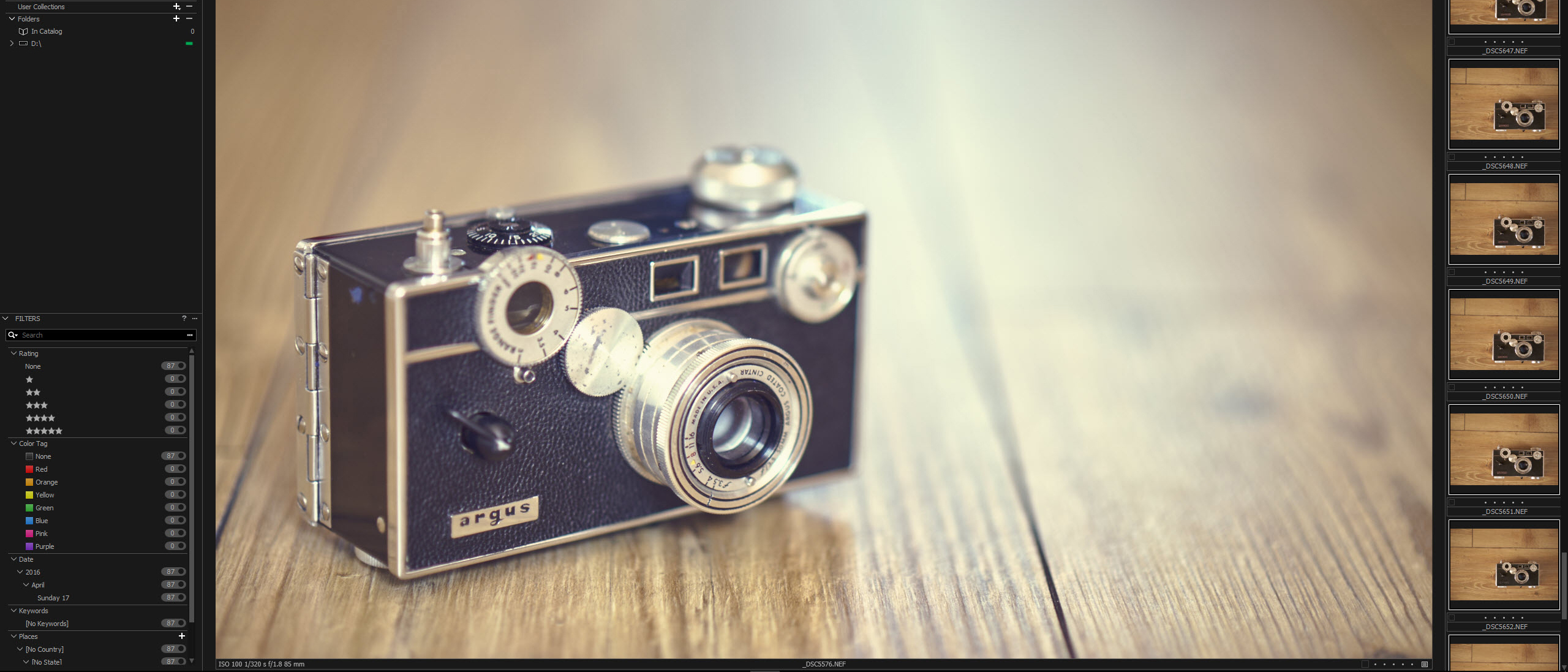TechRadar Verdict
Capture One Pro 10 is a powerful raw cataloguing and editing program offering the industry’s best camera tethering controls for professional photographers. If you need the ultimate in control, not to mention excellent image quality, this software might just be what you’re looking for.
Pros
- +
Highly customizable
- +
Powerful controls
- +
Excellent image quality
Cons
- -
Expensive compared to competitors
- -
Import naming limitations
Why you can trust TechRadar
Capture One began life as a tethering solution for digital medium format cameras, and has evolved into a fully-featured software program for cataloguing images, processing raw files and of course, tethered shooting. It’s compatible with over 450 camera models, although tethered capture only supports Canon, Nikon, Sony and Phase One cameras.
If you’re unfamiliar with tethered shooting, it’s when you shoot with the camera attached to a computer via USB, and images are saved to the computer or external hard drive rather than a memory card inside the camera. When shooting tethered you have the ability to select camera settings in Capture One and fire the shutter without the need to touch the camera, while images can be reviewed on the larger computer screen rather than a small camera LCD.
A key advantage of shooting tethered are that you have a live preview on the computer screen, enabling you to focus precisely and check exposure and sharpness
A key advantage of shooting tethered are that you can review a live preview on the computer screen, enabling you to focus precisely and check exposure and sharpness. For professional photographers it also means clients can review shots as they’re taken.
Another feature here is Capture Pilot, which is an app for iOS devices and offers web-based remote / wireless control of the connected camera and image viewing. The benefit here is that remote teams can easily collaborate, regardless of location.

Capture One Pro 10 is unique in that it offers two file management systems. Session Based File Management is used for shooting tethered and streamlining the process of saving, selecting and rejecting images, while Catalog Based File Management is designed for a regular select, edit and export workflow.
Even if you don’t ever intend to shoot tethered, Capture One offers image cataloguing and raw processing controls that make it worth consideration by serious photographers.
Performance
If you’re familiar with other image cataloguing and raw processing software you’ll find many aspects of Capture One similar, although the interface is laid out a little differently to some competitors, so may take some getting used to. However, cataloguing images, processing and exporting are all fairly intuitive.

Much of the Capture One Pro interface is customizable, so you can decide exactly how you want to have it laid out to suit your workflow. You can also save presets and parameters that you can then apply to images at the touch of a button, or have applied automatically to images from particular cameras.
Tool/setting defaults can be set for all images or those from specific cameras, which will be particularly useful if you use different cameras, the raw files from which generally require specific levels of settings. These are set within a number of customizable tabs including Library, Capture, Lens, Color, Exposure, Details, Local Adjustments, Adjustments, Metadata, Output and Batch.
If at any point you need help, most sections of the interface have a help icon in the form of a question mark that will take you to the relevant subject online. Tutorial videos on the Capture One website are clear and easy to follow making getting started a great deal easier.
That said, Capture One Pro isn't really for beginners, but rather at advanced enthusiasts and professional photographers.

Localised adjustments can be added quickly and easily, and applied to layers so that each can be individually edited or deleted. These ‘layers’ are different from layers in Photoshop or Elements, though, so an additional editing programme remains essential for advanced retouching and compositing.
Capture One Pro 10 is claimed to have improved performance in terms of underlying processes and system management, and it certainly runs quickly and smoothly. Image render time when zooming is roughly the same as Lightroom, and image import time/preview generation is also similar.
New features are mostly aimed at streamlining the photographer’s workflow
Other improvements over previous versions include a new three-step sharpening feature for managing image sharpness at the capture, user-applied and output stages. On-screen proofing is another new feature that allows you to reliably check ICC profiles, sharpening, JPEG artifacts and so on before outputting images and sending them on to clients.
New features are mostly aimed at streamlining the photographer’s workflow, which combined with the improvements to overall performance make this software a slick option for photographers.
A significant, but not deal-breaking deficiency is the inability to rename folders of raw files imported from their current location, a system many photographers use. This means imports are listed in the catalogue by import date and time rather than by folder name, which suggests that importing or shooting images to be saved within the catalogue rather than outside of it is the preferred method.
Needless to say, you might not want a preferred workflow imposed on you by software, especially one that offers a great deal of flexibility and customisation in other areas. Applying keywords to images is one way to resolve the issue.
Verdict
Capture One Pro 10 is a formidable option for cataloguing, raw processing and tethered shooting. The caveat is that it isn’t cheap; it’ll cost you more than the Creative Cloud photography package (over a year at least) that includes both Lightroom CC and Photoshop CC. That said, once you've paid for it, it's yours and you can upgrade once new versions become available.
So can Capture One remove the need the Photoshop or similar editing programme? In short, the answer is no. You’re still going to need additional software to take care of retouching, manipulation and to use adjustment layers and other features, and while this isn’t going to be an issue for professionals it could put off enthusiasts.

That said, the image quality achievable with the software is second to none, and photographers looking for fine control over colour balance, sharpening, noise and optical corrections won't be disappointed. And many of the features here, including the excellent camera tethering controls, aren't available in other editing software.
James Abbott is a professional photographer and freelance photography journalist. He contributes articles about photography, cameras and drones to a wide range of magazines and websites where he applies a wealth of experience to testing the latest photographic tech. James is also the author of ‘The Digital Darkroom: The Definitive Guide to Photo Editing’.

